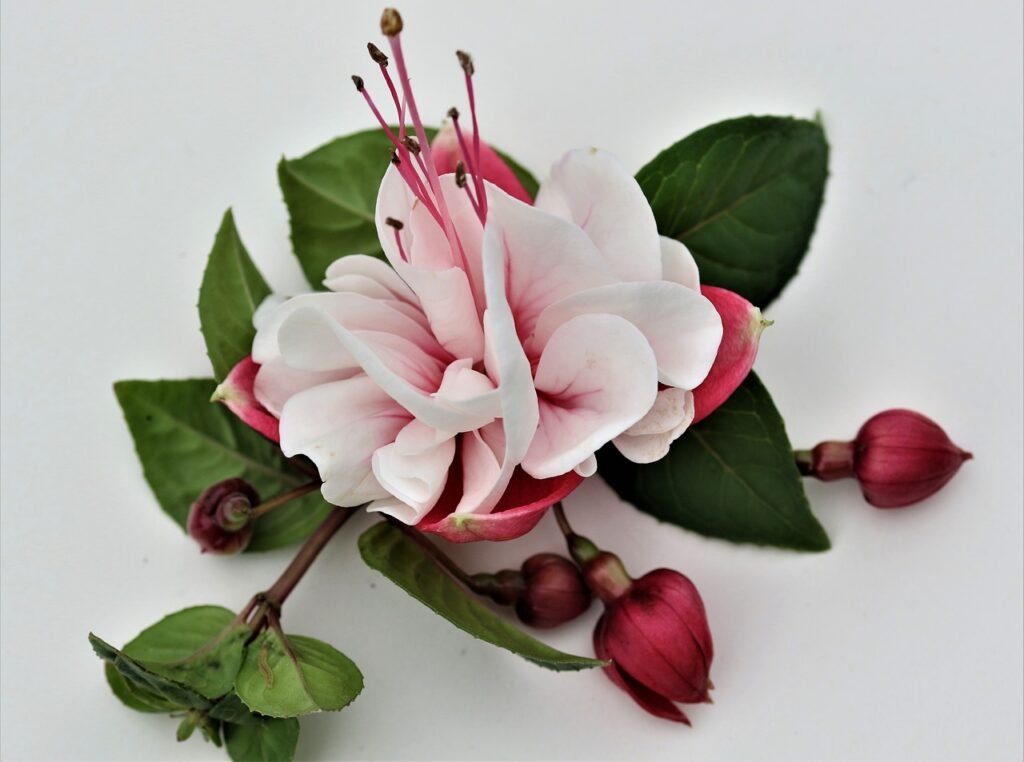How to Grow and Care for Pothos

In This Article
This is a popular houseplant known for its attractive, heart-shaped leaves and easy-care nature. The pothos plant, scientifically known as Epipremnum aureum, is a beloved staple in the world of indoor gardening. With its origins in the lush, tropical forests of Southeast Asia, pothos is admired for its trailing vines and vibrant, heart-shaped leaves.
This hardy plant has gained widespread popularity due to its adaptability and low-maintenance nature, making it an excellent choice for both novice and experienced gardeners. Its ability to thrive in a variety of indoor conditions has cemented its status as a favorite houseplant around the globe. Visit Our Other Houseplant Here.
Pothos plants grow quickly, often extending 12 to 18 inches in length each month. Their cascading vines, which can reach up to 10 feet or more indoors, feature pointed, heart-shaped leaves that measure between 4 to 8 inches in length. These leaves can be variegated with white, yellow, or light green. Pothos plants thrive in temperatures ranging from 60°F to 85°F and prefer humidity levels of 50% to 70%. However, it’s important to note that pothos plants are toxic to pets, so they should be kept out of reach of cats and dogs.
Pothos Care

Caring for pothos is incredibly easy and fuss-free. These versatile plants thrive in a wide range of environments, from bright, indirect light to low light conditions. They can be grown in dry soil or even in water-filled vases. While they flourish in nutrient-rich soil, they perform impressively well in nutrient-poor soil too.
Pothos plants live an average five to 10 years, but with minimal consistent care can live much longer.
Follow these key steps to ensure your pothos thrives:
Light
Light is paramount for the growth of pothos plants, playing a pivotal role in their development. Pothos thrive in moderate to bright indirect light, ideally between 1000 to 2000 lux. Coupled with temperatures ranging from 18°C to 27°C (65°F to 80°F), this optimal light range ensures that photosynthesis—the process converting light into energy—is maximized.
Adequate light and temperature foster accelerated growth rates, with pothos vines extending up to 30 to 45 centimeters (12 to 18 inches) per month under ideal conditions. Conversely, insufficient light below 500 lux, coupled with extreme temperatures outside the 18°C to 27°C (65°F to 80°F) range, can impede growth, resulting in sparse, leggy foliage. Therefore, maintaining the right balance of light and temperature is essential for promoting robust growth and vibrant foliage in pothos plants.
Soil
The ideal soil for pothos plants is a well-draining mix that strikes a balance between moisture retention and aeration. This typically includes a standard indoor potting mix combined with additives like perlite, orchid bark, or coarse sand to enhance drainage.
These components prevent waterlogging, which can lead to root rot, while still providing the necessary nutrients for healthy growth. Additionally, maintaining a slightly acidic to neutral pH (around 6.1 to 7.5) in the soil ensures optimal nutrient absorption by the roots. Overall, choosing a well-draining soil mix ensures that your pothos plant thrives and remains healthy.
Water
To care for your pothos plant effectively through water management, adopt a comprehensive approach. Begin by regularly assessing soil moisture levels, checking for dryness by inserting your finger into the soil. When the top inch feels dry, it’s time to water. Direct water at the base of the plant, ensuring thorough saturation while avoiding excessive wetting of the foliage to prevent fungal issues.
Opt for room temperature water that has been allowed to stand for at least 24 hours to dissipate chlorine. Consistency is key, so establish a regular watering schedule to maintain optimal soil moisture levels, aiming for slight moisture without waterlogging. Confirm that your pot has adequate drainage to prevent water accumulation, mitigating the risk of root rot.
Additionally, consider boosting humidity levels by misting the leaves or using a pebble-filled tray nearby. By implementing these informative watering practices, you’ll nurture a thriving and vibrant pothos plant, enhancing the beauty of your indoor space.
Temperature
Pothos plants prefer a temperature range of 18°C to 27°C (65°F to 80°F), reminiscent of the warm and tropical climate they thrive in across Southeast Asia. This moderate temperature spectrum creates an ideal environment for their growth and overall well-being, particularly when cultivated indoors.
Consistency in temperature is crucial, as deviations from this range can disrupt their equilibrium and impact their health negatively. Extreme temperatures, such as those below 10°C (50°F) or above 32°C (90°F), pose risks, potentially causing damage, growth inhibition, or stress-induced leaf issues like wilting or browning.
By ensuring a stable and comfortable temperature within the recommended bounds, you’ll foster robust growth and lush foliage in your pothos plant, ensuring its enduring health and aesthetic appeal.
Humidity
Humidity is critical for pothos plants, affecting leaf health, transpiration, root development, and propagation success. Adequate humidity prevents leaf dryness and fungal diseases, while excessive humidity can lead to issues. Ideally, maintain humidity levels between 40% to 60% for optimal plant health. Higher humidity reduces transpiration rates, helping the plant conserve water during dry periods.
It also facilitates efficient water uptake by the roots, promoting robust growth. Maintaining high humidity around cuttings enhances their chances of successful rooting during propagation. Conversely, low humidity can cause leaf edges to brown or curl. Therefore, balanced humidity levels are crucial. Transpiration, the release of water vapor through leaves, regulates internal temperature and humidity.
Higher humidity reduces transpiration rates, aiding water conservation. Proper humidity ensures lush foliage and healthy root systems. Ideal humidity conditions optimize nutrient absorption and overall plant growth. Aim for moderate to high humidity for pothos plants to thrive.
Fertilizer
While pothos plants don’t have high fertilizer requirements, occasional feeding is valuable for maintaining their health and vitality. Fertilizers are instrumental in supplying essential nutrients like nitrogen, phosphorus, and potassium, which are vital for supporting various aspects of plant growth, including leaf development, root establishment, and overall vigor.
Through regular fertilization, pothos plants receive the nourishment they need to thrive, exhibiting lush foliage, robust root systems, and increased resilience to environmental stressors.
Therefore, fertilizers play a significant role in ensuring the long-term well-being and beauty of pothos plants, contributing to their growth and flourishing presence in indoor spaces.
Types of Pothos

Pothos plants, beloved for their lush foliage and low-maintenance appeal, showcase a delightful assortment of cultivars, each boasting its unique charm. Let’s explore some popular varieties:
- Golden Pothos: With its vibrant, heart-shaped leaves tinged in shades of green and gold, this cultivar brings a radiant touch to any indoor setting.
- Marble Queen Pothos: Exuding timeless elegance, its leaves feature an enchanting blend of green and creamy white, evoking a sense of classic sophistication.
- Jade Pothos: Sporting deep, emerald-green foliage, this enduring favorite exudes natural beauty and adaptability, effortlessly enhancing any home décor.
- Neon Pothos: Infused with vibrant energy, its neon-green leaves add a lively pop of color, injecting spaces with an invigorating burst of freshness.
- Manjula Pothos: A botanical marvel, its intricately patterned leaves, adorned with shades of green, silver, and creamy white, captivate with their exquisite detail.
These captivating pothos varieties offer an enchanting selection for plant enthusiasts across America, inviting them to embrace the beauty and diversity of these cherished houseplants, enriching their living spaces with natural grace and allure.
Pruning
Pruning is the act of selectively trimming or cutting back parts of a plant to promote health, growth, and aesthetics.
Pruning holds significant importance in the care of pothos plants, contributing to their overall health, appearance, and longevity. Here’s why pruning matters and how to go about it effectively:
Importance of Pruning
- Encourages Growth: Pruning removes dead, damaged, or diseased leaves and stems, allowing the plant to redirect its energy towards new growth. This promotes a fuller, more vibrant appearance.
- Maintains Shape: Regular pruning helps control the size and shape of the pothos plant, preventing it from becoming leggy or overgrown. It encourages a bushier, more compact growth habit.
- Prevents Disease: Trimming away decaying or infected foliage helps prevent the spread of diseases and pests, keeping the plant healthy and resilient.
- Enhances Aesthetics: By removing unsightly or discolored leaves, pruning improves the overall appearance of the pothos plant, making it more visually appealing.
How to Prune Pothos
- Choose the Right Tools: Use clean, sharp scissors or pruning shears to make precise cuts without damaging the plant.
- Identify Areas for Pruning: Look for dead, yellowing, or damaged leaves and stems that need to be removed. Also, consider trimming back long, leggy growth to encourage branching.
- Make Clean Cuts: Trim the selected foliage or stems just above a leaf node or stem junction, using a diagonal cut to promote healing and prevent water from pooling on the surface.
- Encourage Growth: Optionally, pinch back the growing tips of stems to encourage lateral branching and denser foliage growth.
- Dispose of Pruned Material: Remove any pruned leaves or stems from the plant’s vicinity to prevent the spread of diseases and maintain cleanliness.
By following these pruning techniques, you can ensure that your pothos plant remains healthy, shapely, and visually pleasing, thriving in its indoor environment for years to come.
Propagating Pothos

The propagating process of pothos involves creating new plants from existing ones through several methods:
- Stem Cutting: Select a healthy stem from the parent plant and cut it just below a node using clean scissors or pruning shears. Place the cutting in water or moist soil, ensuring the node is submerged or buried. Roots will develop over time, and once established, transplant the cutting into a pot with well-draining soil.
- Division: Carefully remove the parent plant from its pot and separate it into smaller sections, each with its roots and foliage. Replant these sections in separate pots filled with fresh potting mix.
- Air Layering: Choose a section of a healthy stem and make a small incision or scrape off a portion of the bark. Apply rooting hormone (optional) and wrap the wounded area with moist sphagnum moss or a rooting medium. Cover the moss with plastic wrap to retain moisture. Once roots form, cut below the rooted area and transplant it into its container.
- Leaf Cuttings: Take individual leaves from the parent plant, ensuring each cutting includes a portion of the stem. Place the cuttings in water or directly into moist soil, burying the stem portion. Roots will emerge from the nodes, and new plants will develop.
To Propagate Pothos successfully, ensure the cuttings or divisions are kept in a warm, humid environment with indirect light. Maintain moisture levels and monitor for root development regularly. With patience and care, you can propagate pothos plants to expand your collection or share with others.
Potting and Repotting Pothos
Potting and repotting are essential tasks in the care of pothos plants, ensuring they have suitable containers and ample space to flourish. Here’s how to carry out each process:
Potting:
- Select a container with drainage holes to prevent water buildup.
- Layer the bottom of the pot with drainage material like gravel or perlite.
- Fill the pot with a well-draining potting mix, leaving room for the plant.
- Gently remove the pothos from its current pot, taking care not to harm the roots.
- Loosen the roots and remove any dead or tangled ones.
- Place the plant into the new pot at the same depth as before.
- Surround the roots with additional potting mix, ensuring stability.
- Water the plant thoroughly, allowing excess water to escape through the drainage holes.
Repotting:
- Choose a larger pot with drainage holes to accommodate the growing root system.
- Prepare the new pot with fresh potting mix and drainage material at the bottom.
- Carefully extract the pothos from its current pot, gently separating the roots.
- Assess the roots for overcrowding or damage, trimming if necessary.
- Position the plant in the new pot at the same depth as before.
- Fill the gaps around the roots with fresh potting mix, ensuring stability.
- Water the plant generously to settle the soil and hydrate the roots.
- Allow excess water to drain away, and find a suitable spot for the repotted plant to thrive.
By following these procedures for potting and repotting, you provide your pothos plants with optimal conditions for growth and vitality.
Common Pests and Plant Diseases

Pothos plants, while generally robust, can be vulnerable to various pests and diseases that can impact their health and appearance. Here’s a closer look at some of the common culprits:
Pests:
- Spider Mites: These minuscule arachnids thrive in dry conditions and can quickly infest pothos plants, especially indoors. They pierce the plant’s tissues to feed on sap, leading to stippling, webbing, and eventual leaf damage.
- Mealybugs: Mealybugs are small, soft-bodied insects covered in a waxy, cotton-like substance. They typically cluster on the undersides of leaves and along stems, sucking sap from the plant and causing yellowing, wilting, and stunted growth.
- Scale Insects: Scale insects appear as tiny, oval-shaped bumps on plant stems and leaves. They feed on plant sap, often causing yellowing, wilting, and dieback. Heavy infestations can weaken the plant and make it more susceptible to other issues.
- Thrips: These slender, winged insects feed on plant tissues by puncturing them and sucking out the contents. They can cause silvering or discoloration of leaves, distortion, and premature leaf drop.
- Aphids: Aphids are small, soft-bodied insects that congregate on tender new growth, sucking sap from the plant. They reproduce rapidly and can cause curling, distortion, and yellowing of leaves.
Diseases:
- Root Rot: Root rot is a fungal disease caused by overwatering or poorly draining soil, leading to the decay of roots. Symptoms include wilting, yellowing, and eventual collapse of the plant.
- Leaf Spot: Leaf spot is a fungal infection characterized by dark, water-soaked spots on leaves. It thrives in warm, humid conditions and can spread rapidly, especially if the foliage remains wet for extended periods.
- Powdery Mildew: Powdery mildew appears as a white, powdery growth on the surfaces of leaves, stems, and flowers. It thrives in humid environments with poor air circulation and can weaken the plant over time.
- Bacterial Blight: Bacterial blight causes dark, water-soaked lesions on leaves, which may ooze or turn slimy in humid conditions. It spreads through contaminated water or pruning tools and can lead to significant damage if not addressed promptly.
- Pythium Rot: Pythium rot is a fungal disease that attacks the roots and stems of pothos plants, leading to soft, mushy tissue and eventual collapse. It’s often associated with overwatering or poor drainage and can be challenging to control once established.
To prevent and manage these issues, it’s essential to maintain good cultural practices, including proper watering, adequate airflow, and regular inspection for signs of pests or diseases. Prompt intervention, such as removing affected plant parts, improving growing conditions, and using appropriate treatments, can help keep your pothos plants healthy and thriving .
FAQ
- How often should I water my pothos plant?
Answer: Water your pothos plant when the top inch of soil feels dry to the touch. Allow excess water to drain out of the bottom of the pot to prevent overwatering.
- What is the best location for my pothos plant in terms of light exposure?
Answer: Pothos plants thrive in bright, indirect light but can also tolerate low light conditions. Avoid placing them in direct sunlight, as this can scorch their leaves.
- Can pothos plants survive in low light conditions?
Answer: Yes, pothos plants can survive in low light conditions, but they may not grow as quickly or produce as many leaves as they would in brighter light.
- How do I propagate my pothos plant?
Answer: You can easily propagate pothos plants by taking stem cuttings and rooting them in water or soil. Simply cut a section of stem with at least one node and place








